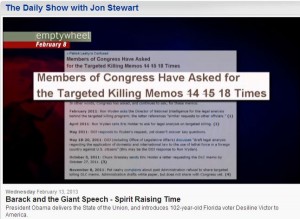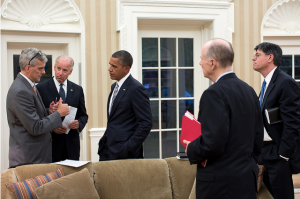Alleged Wacko Rand Paul Asks Serious Questions about Targeted Killings
The Politico went to some effort, it seems, to dismiss Rand Paul’s concerns about the drone program (as well as his threat to hold John Brennan’s nomination if and when it gets out of the Senate Intelligence Committee).
But Paul’s two letters on the subject are actually far more serious than those mocking them make out (the first one also brings the tally of congressional requests for the targeted killing memos to 19).
For example, Paul is one of the few people asking any questions about non-US citizens.
Do you believe that the president has the power to authorize lethal force, such as a drone strike, against a U.S. citizen on U.S. soil? What about the use of lethal force against a non-U.S. person on U.S. soil?
He also asks how the National Security Act and Posse Comitatus might play into a domestic strike.
Do you believe that the prohibition on CIA participation in domestic law enforcement, first established by the National Security Act of 1947, would apply to the use of lethal force, especially lethal force directed at an individual on a targeting list, if a U.S. citizen on a targeting list was found to be operating on U.S. soil? What if the individual on the targeting list was a non-U.S. person but found to be operating on U.S. soil? Do you consider such an operation to be domestic law enforcement, or would it only be subject to the president’s wartime powers?
[snip]
Do you believe that the Posse Comitatus Act, or any other prohibition on the use of the military in domestic law enforcement, would prohibit the use of military hardware and/or personnel in pursuing terrorism suspects—especially those on a targeting list—found to be operating on U.S. soil? If not, would you support the use of such assets in pursuit of either U.S. citizen or non-U.S. persons on U.S. soil suspected of terrorist activity?
And (here in his first letter to Brennan) Paul asks the seemingly unspeakable question: how 16 year old American citizen Abdulrahman al-Awlaki came to be killed by a US drone.
What role did you play in approving the drone strike that led to the death of the underage, U.S. citizen son of Anwar al-Awlaki? Unlike his father, he had not renounced his U.S. citizenship. Was the younger al-Awlaki the intended target of the U.S. drone strike which took his life? Further, do you reject the subsequent claim, apparently originating from anonymous U.S. government sources, that the young man had actually been a “military age male” of 20 years or more of age, something that was later proven false by the release of his birth certificate?
Paul even asks a question limited largely to Yemen experts — whether or expanding campaign there is really about counterinsurgency rather than counterterrorism.
Is the U.S. drone strike strategy exclusively focused on targeting al Qaeda, or is it also conducting counterinsurgency operations against militants seeking to further undermine their government, such as in Yemen?
Finally, Paul slips this question in, which has nothing to do with targeted killings, but has everything to do with Brennan’s seeming disinterest in the privacy of the American people.
Do you support the Attorney General’s 2012 guidance to the NCTC that it may deliberately collect, store, and “continually assess” massive amounts of data on all U.S. citizens for potential correlations to terrorism, even if the U.S. citizens targeted have no known ties to terrorism?
Now, to Politico this may be a big game. But Paul is asking a lot of questions that no one else in DC is asking (note: he may have more leeway to ask such questions than, say, Ron Wyden, who has presumably been read into some of these answers).
Which is, I guess, how the Village now defines wacko: those people who asks the questions they’re too afraid to ask.


